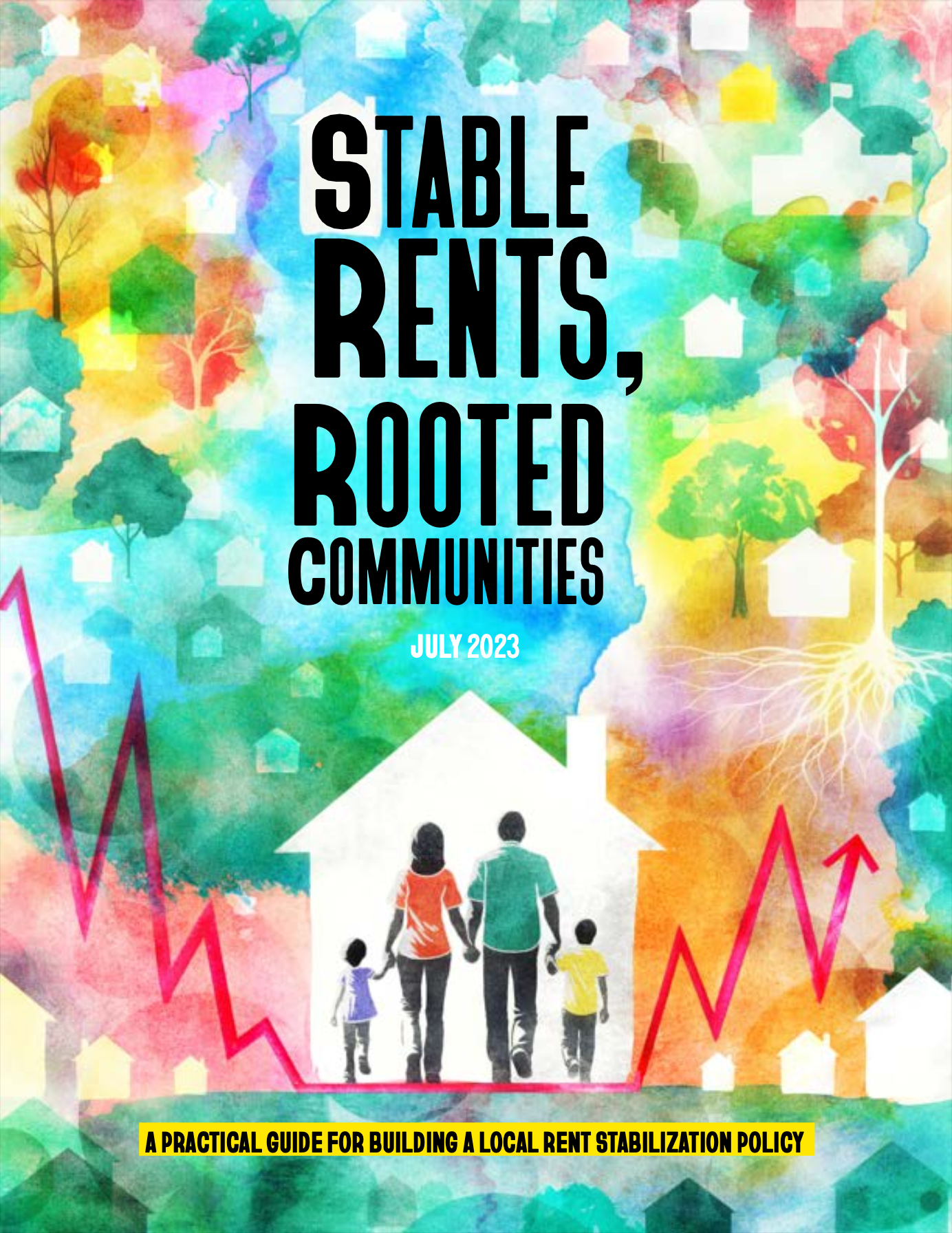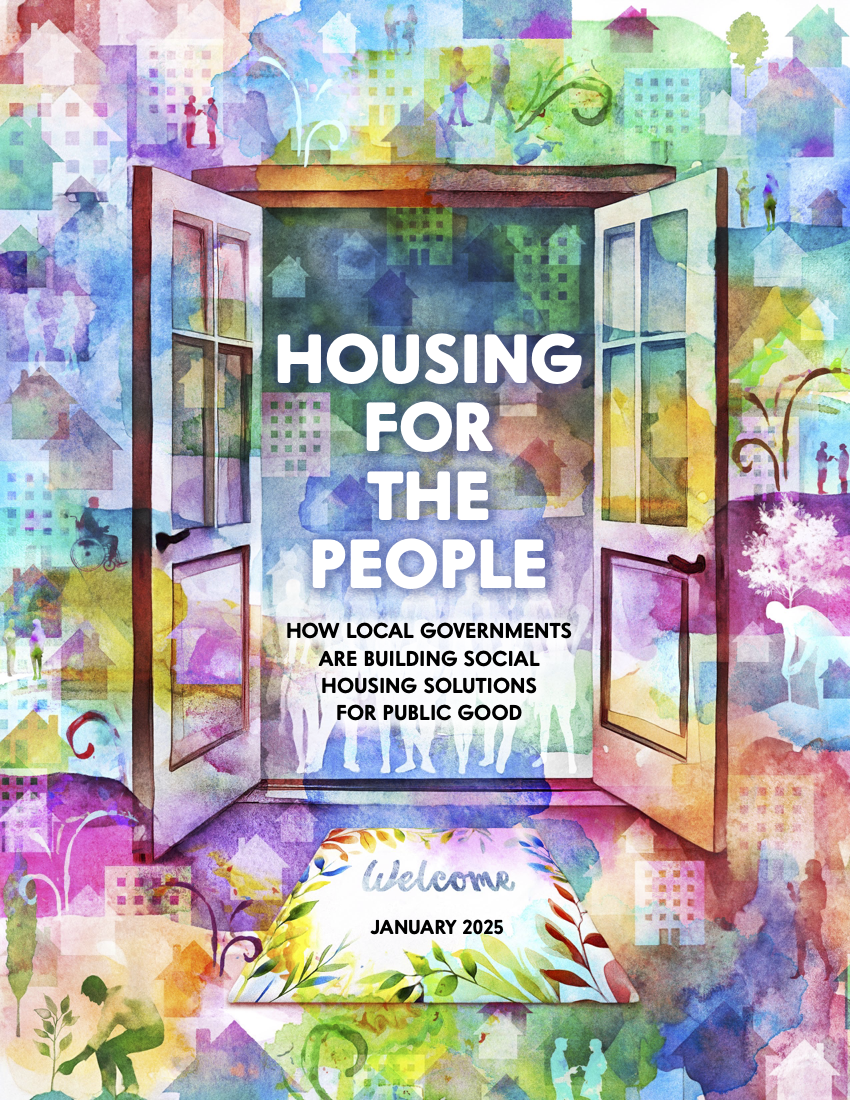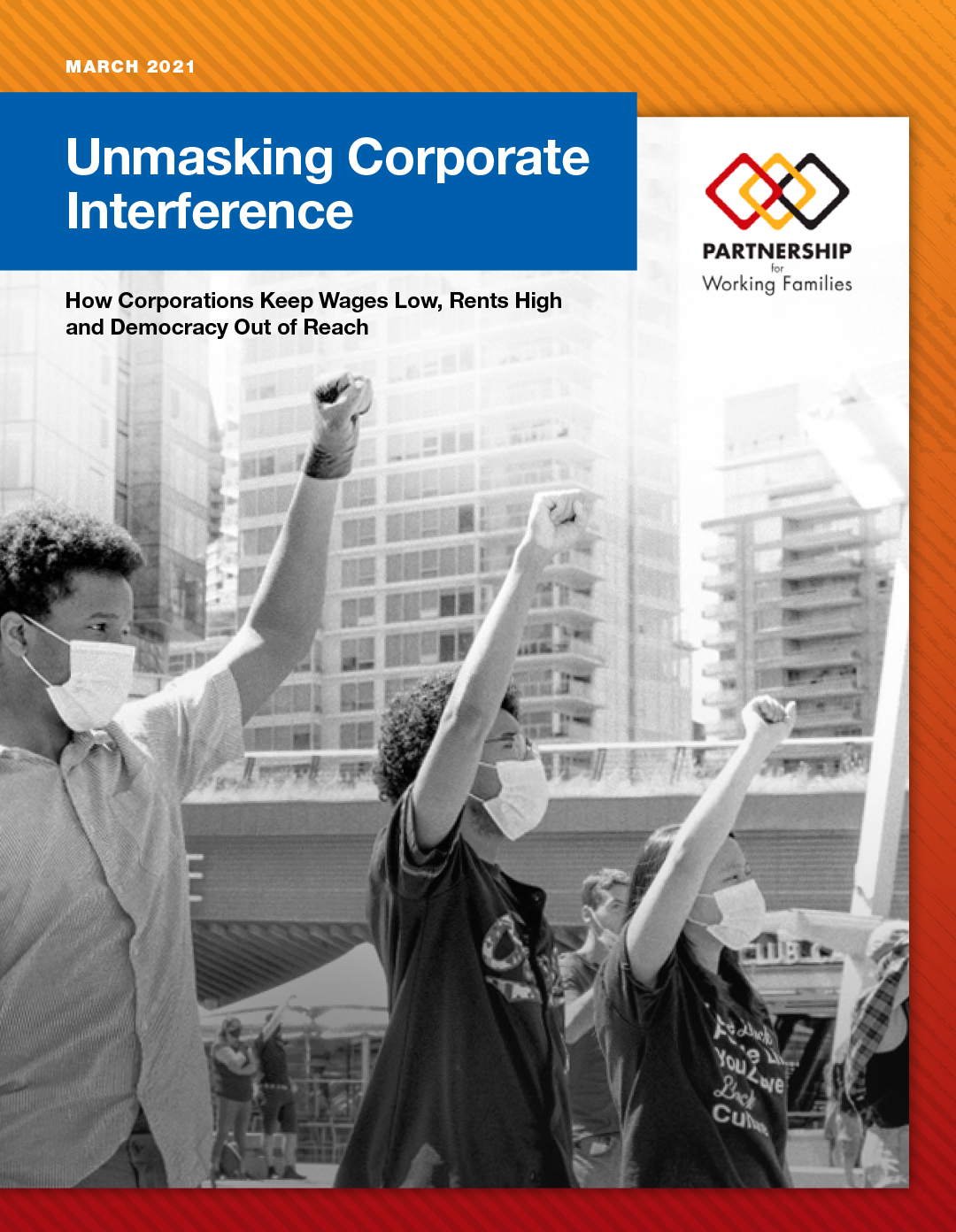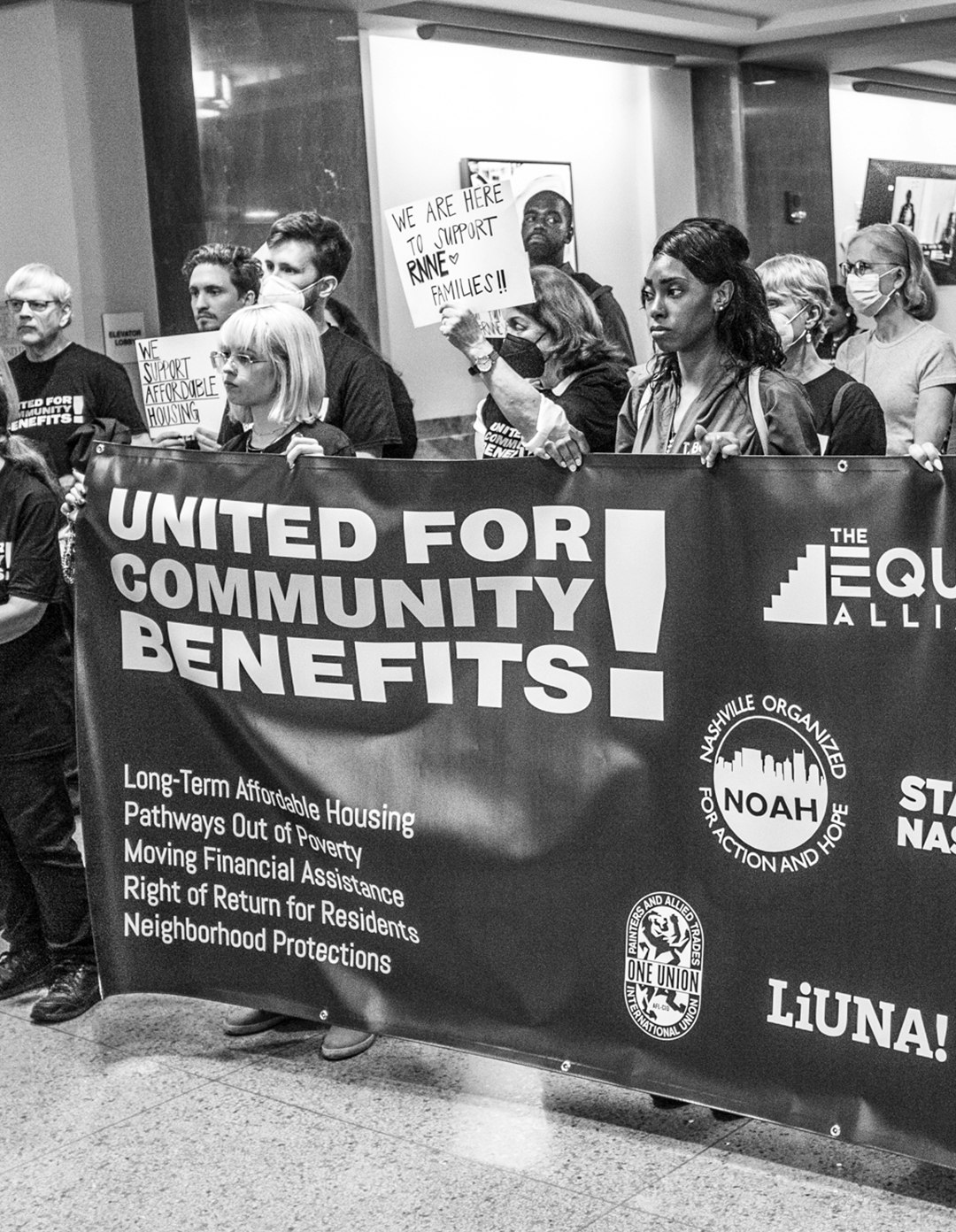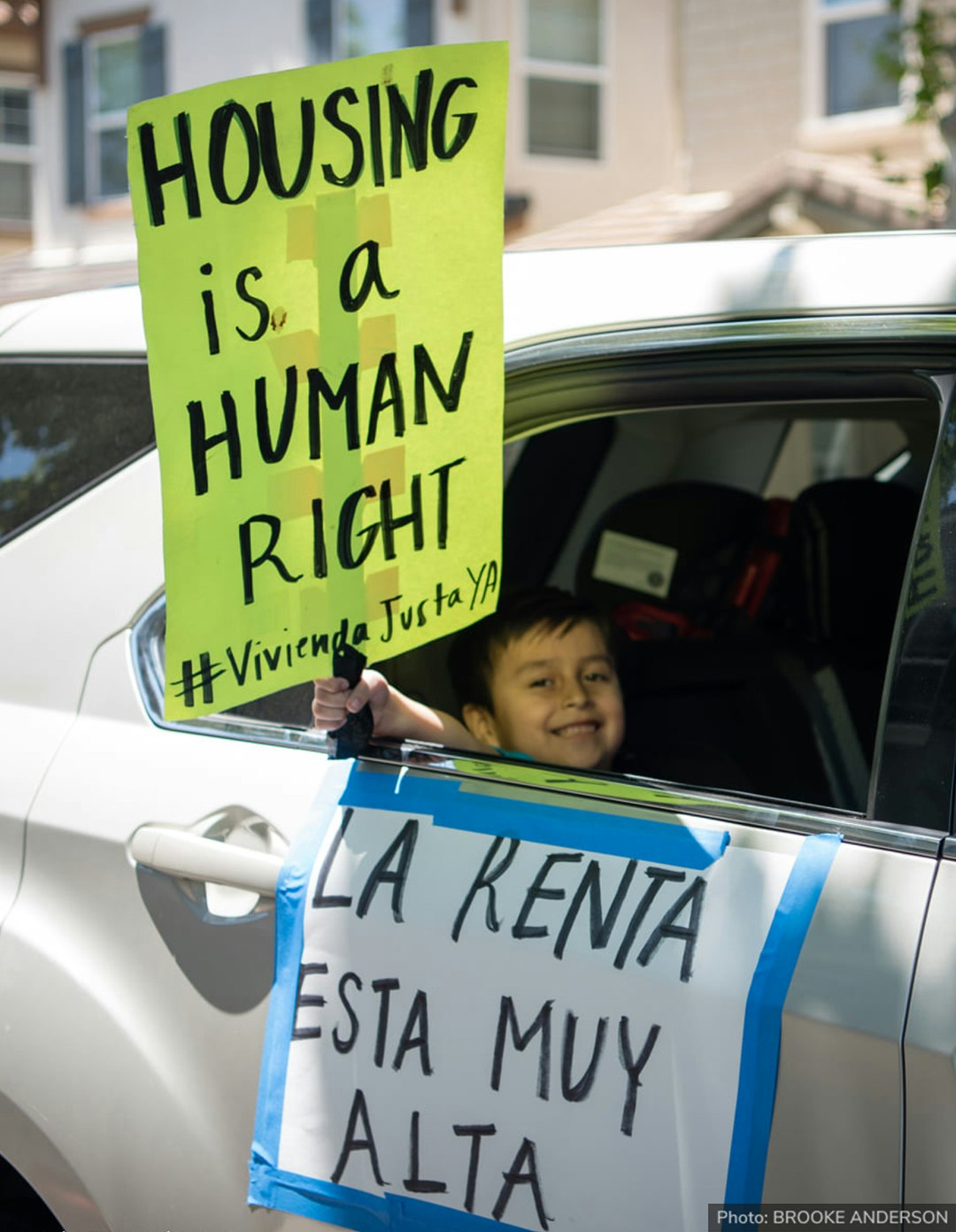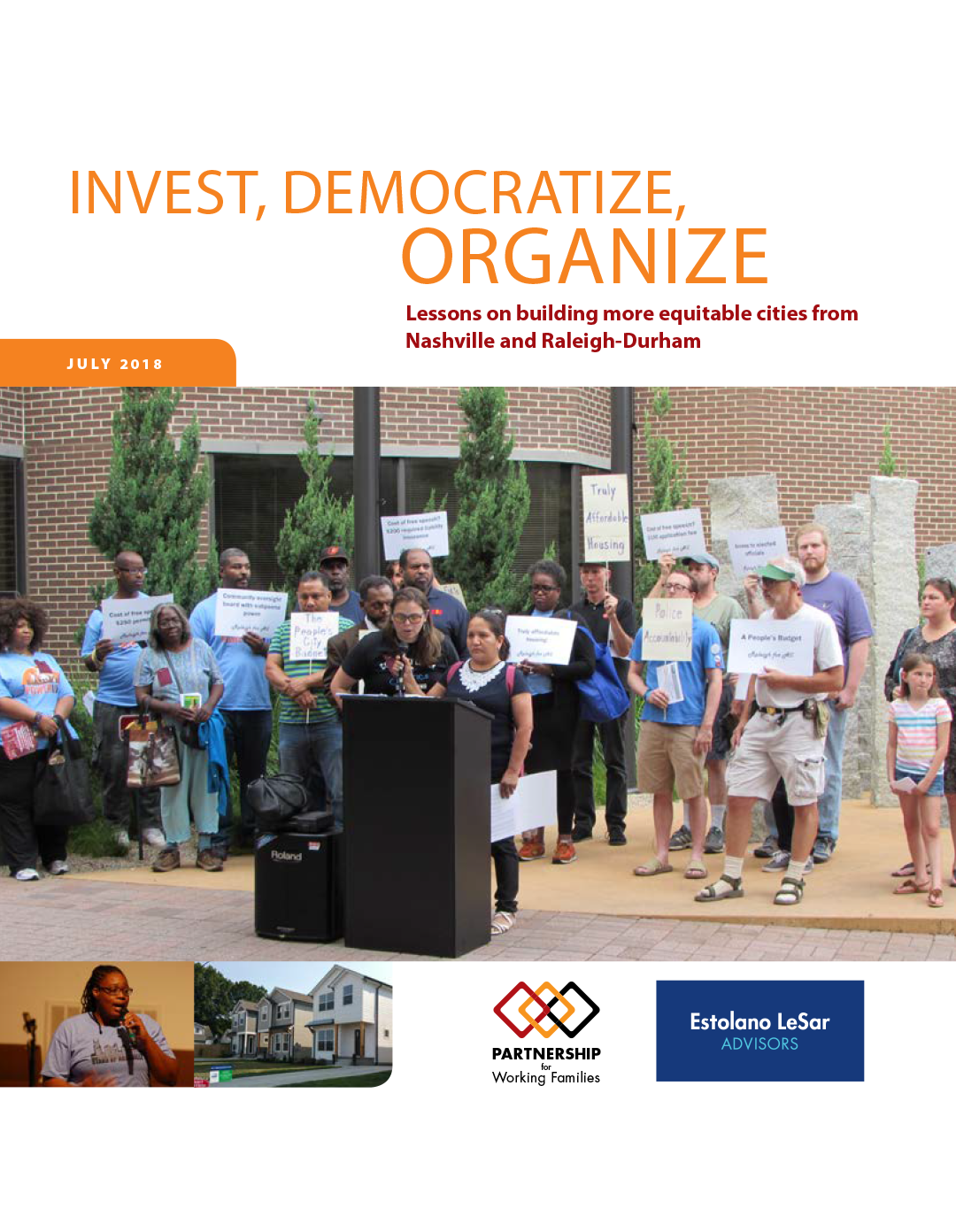policy toolkit
Stable Rents, Rooted Communities
A practical guide for building a local rent stabilization policy


Rent stabilization is a protection all renters need
Rent stabilization is an essential tool to protect renters during this unprecedented time of tenant exploitation. It is also a foundational safeguard against unscrupulous landlords who are looking for an easy way to kick someone out of their home. Similar to eviction protections, rent stabilization is a check on landlords’ tactic of raising rents to force out a tenant, whether it is motivated by discrimination, interpersonal conflict, or excessive profit.
Crafting a rent stabilization ordinance can seem intimidating. There are a lot of factors to consider, and some of them are points of contention, which you will find yourself negotiating with industry groups and even allies. This toolkit walks you through the choices and trade-offs you’ll have to consider while also keeping in mind the policy goal: protecting renters from disruptive and devastating rent hikes.
Co-authored with the Local Progress Impact Lab.

Part 1
Who's Covered?

Among the first questions you’ll have to ask yourself when crafting a rent stabilization policy is which units are covered and which ones are exempt. To put it even more simply, who gets protection from rent hikes, and who doesn’t?
The more exemptions, the smaller the number of renters that will be protected from excessive rent increases. The more units covered, the greater number of people will be protected. Unfortunately, the greater number of people protected from exorbitant rent increases, the tougher a rent stabilization ordinance is to pass in the face of industry pressure and other community opposition.
Here are some common considerations and what you should know about them:
Exemption periods
It’s quite common for rent stabilization policies to exempt newly-constructed rental units for some period of time. The belief is that this exemption helps quell the fear of disincentivizing developers and investors from building new units. An example of a short exemption period can be found in Takoma Park, MD, where newly constructed buildings with two or more units can apply to be exempted from the city’s RSO for the first 5 years after receiving a rental license. Exemption periods can extend much longer – 20 years as in St. Paul, MN.
When the real estate lobby demands a new construction exemption, challenge them and ask them to justify the number they’re advocating for with actual data in the form of real estate pro-formas or financial calculations. Why 20 years over 15 years? Why 15 years over 7 years? What about the new buildings’ financing and/or capital stack require the new construction exemption to be the number they demand? Usually, they just demand the highest number they think they can win.
If your rent stabilization policy includes an exemption period, use rolling dates, rather than one cutoff date. So, if you pass a rent stabilization ordinance in 2025 that exempts new units under 5 years old, say that, rather than “units built before August 1, 2030.” In the long term, rolling exemptions result in a higher proportion of housing units in your jurisdiction being covered by rent stabilization.
Minimum units exemption
Some RSO policies only apply to buildings of a certain number of units or more; other RSO policies have exempted units when the property owner owns just a few units. These exemptions usually result from industry groups claiming that rent stabilization ordinances hurt small business owners, what industry groups call mom-and-pop landlords. While, in general, rent stabilization policies include ways for property owners to seek exceptions if there is hardship, some local ordinances additionally carve out exemptions for property owners who own four or sometimes two units or fewer. For example, Washington D.C, exempts buildings that are owned by a natural person (not a corporation), who owns no more than four rental units in that jurisdiction.
Before carving out any exemption on minimum units, it’s important to understand the ownership landscape of your local housing stock. Many rental housing businesses have portfolios with many small buildings, so exemptions for building size may leave many renters unprotected while benefiting many larger businesses anyway.
Public & subsidized housing
Public housing, subsidized units, and apartments built through affordable housing programs are typically excluded from rent stabilization ordinances. This is because the rent is already stabilized through state or federal laws.
However, tenant protections and affordability requirements on Low Income Housing Tax Credit properties expire. Additionally, operators of LIHTC properties often increase rents well above reasonable rates because the federal government’s (U.S. Department of Housing and Urban Development) annually updated maximum rent can grow rapidly, therefore while the maximum rent is regulated, the rate at which rent increases is not regulated.
Some state housing finance agencies have created specific rent stabilization policies for LIHTC units. The Antioch, CA rent stabilization ordinance notably exempted government managed units and did not exempt units built through affordable housing programs, such as LIHTC.
Manufactured homes
If your local community doesn’t stabilize rent for manufactured housing, consider including it in your ordinance. In some states, like California, manufactured homes or the lots on which they sit are covered under a different set of laws. However, New York State limits rent increases for manufactured home renters to 3% as well as fees for late payments.
Some states allow local governments more flexibility to impose rent stabilization on manufactured homes than they do for other types of housing due to the often impossible financial burden of relocating a manufactured housing unit to a different park.
Recommendations for who to cover
The considerations we list above are focused on who gets protection. Ultimately, all renters should have some kind of shield from rent increases that put them at risk of displacement or force them to make trade-offs like forgoing food, child care, or health care. Here’s a summary of recommendations to help achieve that goal:
Cover as many units as possible. Ideally all units that are legally able to be stabilized should be covered. Limit exemptions for new construction and for property owners with a small number of units. If challenged by opposition, request data from them that supports their counter-proposal.
If exempting newly-constructed units, use a rolling date rather than a cutoff date. This will help ensure that more renters are covered over the years as properties age. Take stock of your housing.
Before carving out exemptions in the course of negotiations, know how various exemptions impact your goal of protecting all renters from excessive rent increases.
If your state or local laws leave residents of manufactured housing unprotected from rent increases, consider extending rent stabilization to cover manufactured housing as well.
Part 2
Allowable Rent Increases
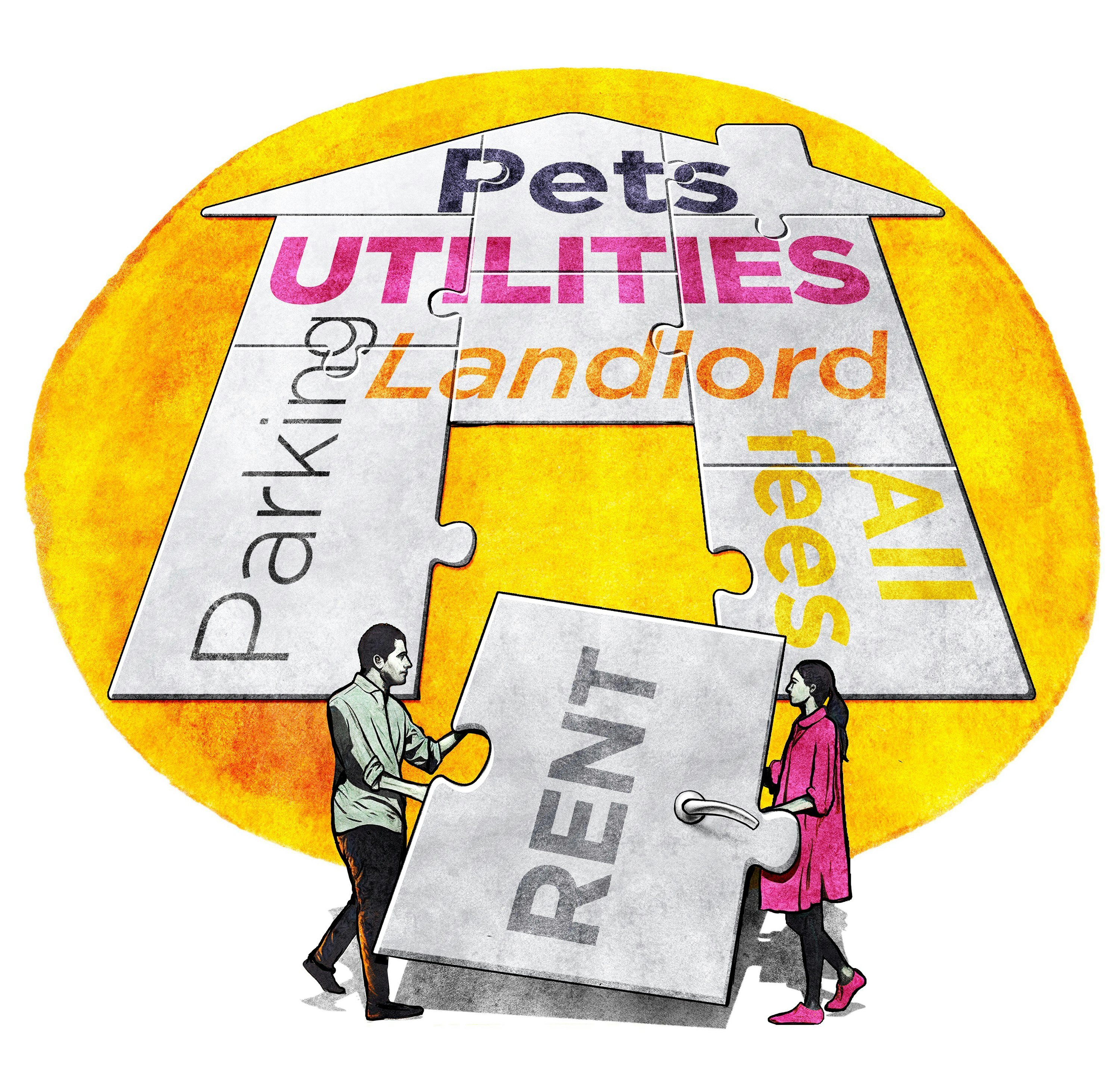
Once you’ve thought through who is covered by the policy, next you’ll need to consider how the policy will ensure stable housing costs for renters. RSO policies must balance the need to protect renters from egregious rent hikes and the need to heed legal limitations that may impact how much an ordinance can diminish the property’s value and earning potential.
Defining rent
Local communities use different language for this. In some cities, like Santa Ana, CA, rent includes all fees associated with the housing unit, including parking, pet fees, and utilities covered by the property owner. In St. Paul, rent is named simply as “monetary consideration charged or received by a Landlord concerning the use or occupancy of a Rental Unit pursuant to a Rental Agreement.”
How often can property owners raise the rent?
Next you’ll determine how often owners can raise the rent per year. Typically most ordinances limit the frequency to once every 12 months.
What is the maximum rent increase allowed?
This third part is the decision point in your ordinance that will draw the most attention. But it’s quite simple, even if the negotiation around this number is not. How stable do you want renters’ housing costs to be and how will you express that stability?
Ordinances can be tied to the consumer price index, tied to a percentage of the base rent (original amount the renter is paying), or a combination of both:
In St. Paul, MN, rent increases are capped at 3% of the base rent.
In Takoma Park, MD, rent increases can’t exceed the change in the consumer price index.
An example of using both indicators can be found in Oakland, CA, where the limit on rent increases is 60% of the change in consumer price index or 3%, whichever is lower. This is useful in times when inflation is high and renters are already struggling with high prices in groceries and services.
Stronger protections for vulnerable populations
Another approach is to ensure that the most vulnerable renters are even more insulated from rent increases. In Washington DC, rent increases for older adults with fixed incomes or people with disabilities are limited to 5%, the change in the consumer price index, or the Social Security cost-of-living adjustment, whichever is lower.
Banked Rent Increases
Some local ordinances include a provision for banking annual rent increases. This means that if a property owner decides not to increase rent for a year or two, they would be allowed to combine the allowable increase all at once in one year.
The advantage of allowing banked rent increases is that property owners might be less inclined to raise the rent up to the maximum allowed under the rent stabilization policy every single year. The disadvantage is that renters might end up with unmanageable increases if there is no limit to the amount of times owners can bank those rent hikes. San Francisco, CA allows property owners to bank their allowable rent increases with no limits on the amounts. Meanwhile, West Hollywood, CA does not allow banked increases.
If your ordinance allows banking, ensure that any banked increases imposed on renters are not so large that renters are at risk of displacement. Consider putting a limit on the number of years increases can be saved for later or number of times per tenancy. Oakland, CA limits banking to 10 years and also sets an annual rent increase ceiling, a total rent increase that can be imposed in any one rent increase and may not exceed the total of three times the allowable CPI increase and may not be greater than the lower of 10% or 5% plus the percent change in cost of living (set by State of California).
The goal of your rent stabilization ordinance is to protect renters from jarring rent hikes. Typically, the larger the allowable increase in rent is, the greater impact banking will have on renters; therefore controlling for that is key in your decision whether to allow banking or not.
Recommendations for setting allowable increases
This section focuses on the stability your ordinance provides to renters. The goal is to make renters’ housing costs as predictable as possible while balancing the need for property owners to earn a fair return on their property. To that end, here are some recommendations to help achieve that goal with your ordinance:
Keep the maximum rent increases as low as possible and make that amount responsive to inflation. Having language in the policy that ties the increase to the lower of the consumer price index or a capped amount, as is the case in Oakland, CA, achieves both of those objectives, and is critical to preventing large allowable increases during periods of high inflation
You can carve out specific exemptions for people vulnerable to even moderate rent increases, such as renters with fixed incomes.
Determine whether banking rent increases is right for you. If this is included in your policy, place a cap on the total amount of the rent increase, for example, two times the increase in the consumer price index. You can also place a cap on the number of times a property owner can save their rent increase for later.
Part 3
Vacancy Control
How rent prices are set when a renter moves out

Rent stabilization ordinances set the rules for how much a property owner can charge a new renter.
Some RSO’s have vacancy control which means there isn’t a change in rental price just because there is a change in renter.
Other RSO’s have vacancy decontrol which is a mechanism that allows property owners to increase the rent as much as they want when a renter moves out and a new renter moves in.
And lastly, there is partial vacancy control that allows a greater increase than the annual increase, but still provides a stabilizing cap.
In all situations though, once a new tenant moves in that initial rent will be subject to rent stabilization regulations.
Strongly Recommended: Vacancy Control
If legally allowed, you should include vacancy control in your ordinance. Without any vacancy control, the rent levels of rent stabilized units can increase drastically between tenancies to the point that they are only affordable to higher-earning renters. Additionally, vacancy decontrol can create a strong incentive for property owners to push current renters out of their housing in order to drastically increase rents. Some examples of vacancy control include:
No change in base rent: In 2019, a series of amendments to New York City’s policy eliminated vacancy decontrol. Rents between and during tenancies are now subject to the same rent increase regulations.
An increase cap (higher than annual cap): In Washington, D.C, when an apartment is vacated, property owners may raise rents by 10% of the prior rent or to the level of the rent charged for comparable units in the area, but the amount cannot exceed 30% of the previous rent. In Saint Paul, MN, property owners can increase the rent by CPI plus 8% of the previous rent if they prove that the unit was vacated due to just cause.
If vacancy decontrol ends up in your RSO
It is particularly important to adopt a just cause eviction policy (addressed in the following section of this toolkit). A just cause eviction policy protects renters from unfair evictions by limiting the reasons a landlord can evict. A just cause policy can help prevent a property owner from pushing a tenant out in order to drastically increase the rental price.
Preemption note
Unfortunately, some jurisdictions have laws that preempt vacancy control (e.g., California Costa-Hawkins Act). Be on the lookout for state action that prevents strong tenant protections. Consider engaging state legislators early on and explain why protections like vacancy control—and rent stabilization as a whole—are important, so legislators are prepared to defend rent stabilization and fight against preemption. For more information on preemption, see the appendix.
Part 4
Exceptions
When rent increases above the annual rent increase cap are allowed
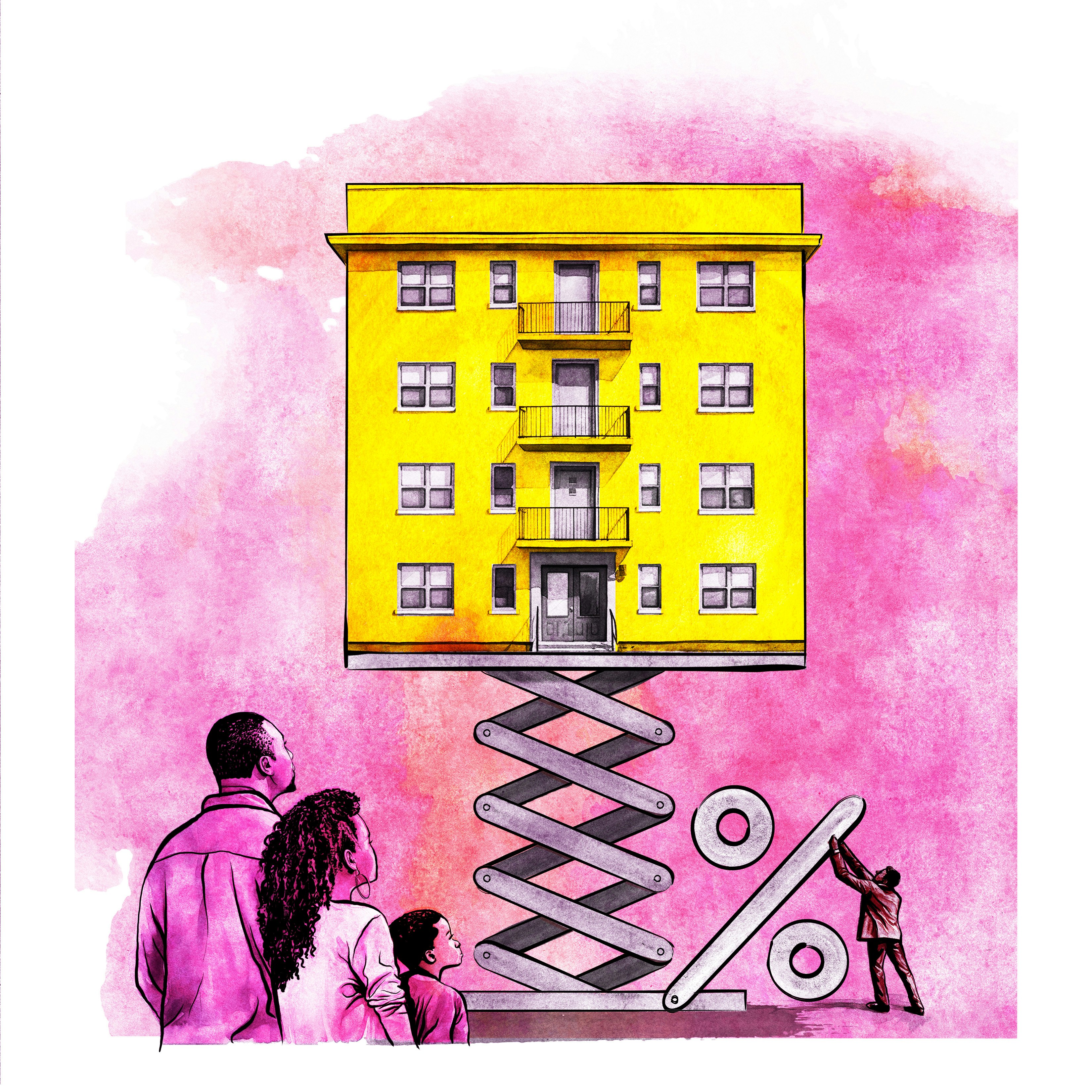
Now that you’ve determined who will be covered by rent stabilization protection and how the annual rent increase will be set, it’s time to consider how to allow exceptions for property owners to raise rents above the permitted annual increase.
Rent stabilization is an important tenant protection policy, and for it to be workable it must include pathways for property owners to obtain exceptions for special circumstances. These exceptions exist in all rent stabilization policies but it is important to structure the ordinance and set up an administration process that is fair and minimizes sudden and excessive costs pushed onto renters.
Hardship/Fair-return exceptions
These types of exceptions ensure a property owner is able to receive a “fair return” on their rental property. Although annual increases typically take into account the fair return principle, there could be situations where operating expenses increase to an extent that a property owner may not be able to maintain the fair return. Fair-return exceptions are generally found in all ordinances to minimize the likelihood of a successful legal challenge.
Rent stabilization policies vary in how they define fair-return, for example in Washington DC it is 12% rate of return, while other places, such as Mount Rainier, MD, do not set a specific number but rather evaluate the property owner’s ability to make mortgage payments and cover costs. The St. Paul, MN current ordinance established a presumption that the maintenance net operating income of the base year (established in ordinance as 2019) provided a reasonable return, adjusted for CPI.
If the annual increase prevents a property owner from receiving the fair return, they may petition for a higher increase. In San Francisco, property owners may claim in a petition that the annual increase does not cover the increased cost of operating and maintenance expenses for a property and request up to a 7% additional base rent increase.
Insight from the field
Evaluation of operating costs are based on the entire property, not the unit. Therefore communities that have partial or full vacancy decontrol, where units are allowed to be priced at “market-rate” for new renters, may find hardship petitions less common since properties with low-rent units (due to long-term renters) can be offset by other units that have experienced turnover and therefore higher rents.
Capital improvements
If property owners conduct renovations to a unit or the entire building that significantly improves the building or significantly extends the use of the property, this is called a capital improvement, and rent stabilization ordinances often allow property owners to pass some of that cost to renters.
To prevent any excessive pass-through costs to renters, an ordinance can 1) make passthrough costs temporary and not a part of the base rent, 2) place a cap on passthrough costs, and 3) allow renters to pay the passthrough cost over an extended period of time. Example:
In New York City, property owners can recover costs for building-wide capital improvement costs, but the excess charge is capped at 2% per year and added to the renter’s payment over a period of 12 to 12.5 years depending on the building's size. Individual unit improvement costs must have written consent from the renter if the unit is occupied. A maximum of 3 improvements can be issued over a period of 15 years and the cost cannot exceed $15,000.
In 2018, San Francisco joined Oakland, Berkeley, and San Jose in eliminating a loophole which previously allowed landlords to pass through increases in debt service and property taxes to rent-stabilized tenants, resulting in large rent increases when owners bought rent-stabilized buildings.
Administration of these exceptions
The process for requesting and evaluating rent increases above the annual limit should have strong oversight so that the exceptions process isn’t abused. Renters should have the right to be notified and appeal decisions. The local government will likely need to increase its capacity in order to ensure the administration of these exceptions functions smoothly. Below are some examples of how governments manage property owners’ requests, however you can read more about setting up a rent stabilization ordinance for success in the Implementation section of this guide.
Typically, jurisdictions require that property owners wanting to increase rents beyond what is annually allowed submit their requests to the administrative body overlooking the rent stabilization ordinance with reasons and evidence supporting their requests. There are various ways these administrative bodies then assess these types of requests from property owners.
St. Paul, MN has a two-tier system. If the additional rent increase falls between 3% to 8%, the request is approved via “self-certification” without thorough review by city staff. If the rent increase is larger than 8%, the process of assessing the request is longer, requires property owners to discuss their request with staff and provide more detailed evidence supporting their request. In both situations, renters are notified and have the right to appeal the decision.
In many other jurisdictions, rent boards hold hearings for all requests regardless of the amount property owners are requesting to increase rents beyond what is annually allowed. For example, Berkeley, CA requires that property owners petition the rent board for any type of additional rent increase. The rent board then holds hearings where it assesses the property owner’s request and in which renters are allowed to participate.
Some policies have exceptions where rent increases are required to be lower than the allowed cap
Some rent stabilization ordinances have a hardship procedure to protect renters who cannot afford to pay their passthrough charges or allow renters to request a decrease in rent because of a reduction or loss of a housing service like parking or laundry, code violations and other habitability problems. For example:
In San Francisco, CA, a renter can request an exemption for the capital improvement and operating and maintenance passthrough costs. The Rent Board will consider a series of factors to assess the renter’s income and need. Renters can also petition the Rent Board to decrease their rent if the property owner has failed to provide an agreed upon or legally required service or the property owner fails to maintain the premises as safe and habitable.
In Berkeley, CA, a property owner cannot issue an allowable rent increase if the Rent Board has found the owner decreased their services to a renter or their unit has habitability issues and if there are serious code violations.
Part 5
Implementation
Making it all work

The previous sections help you consider who gets protected with your ordinance and to what degree. One more facet to consider is how it will work. How will the protection of renters from excessive rent hikes be practiced day to day? How will renters know they’re protected from excessive rent hikes and who can they look to for support if property owners raise rent in violation of the protections you have crafted?
Implementation is the work of practicing the care you are trying to extend to renters, so attention to detail from the outset will improve the success of your policy.
Consider rollback dates
One of the first steps for implementation is choosing when your policy goes into effect. As a way to get ahead of a rent stabilization policy, some property owners might raise rent in anticipation of not being able to do so after the ordinance is passed.
It’s helpful to anticipate this and extend protection retroactively a few months before the effective date. One example of this is in Santa Monica, CA, where a rent stabilization ordinance went into effect August 8, 1979 but covered units subject to the RSO as of April 10, 1978.
Notify renters that they’re covered
The more renters who know they’re protected from excessive rent increases, the more effective your ordinance will be at keeping them rooted in their homes. Some cities have included a requirement that property owners of stabilized units inform renters that they are covered under their local rent stabilization ordinance.
The City of Oakland requires that this notice be provided to renters every time there is a rent increase and that the notice be in English, Spanish and Chinese. In the event that an owner does not provide this information, they must wait at least six months after providing the notice before they impose a rent increase.
Enforce your policy
You have crafted a strong ordinance that protects renters and balances industry expectations for profit. You have put together the plan for implementation.
The next hurdle is enforcing your policy. You’ll want to make clear the consequences for property owners who violate your policy. Here are some examples of consequences for violations:
In New York City and State, if a property owner is found to be charging above the allowable rents, the affected renter may be eligible for damages that can amount to three times the original amount overcharged. Additionally, if a property owner is proven to have intentionally forced a renter to vacate an apartment, they may lose the right to lawful rent increases and receive civil and criminal penalties.
In Berkeley, CA, a property owner can’t issue an allowable rent increase if they haven’t fully paid the Rent Board registration fee, there is a decrease in services, or there are issues with habitability or code violations.
In Santa Monica, CA, renters can file complaints with the rent board to contest possible overcharging of rent beyond what is allowed. If property owners are found guilty of overcharging, they must pay renters the excess amount charged in addition to simple interest and a fine, determined by the amount overcharged.
Who makes and enforces the rules?
Consider who will be the stewards of the policy you have crafted to protect renters. Many jurisdictions create rent boards to administer the policy, determine exemptions or consequences for violations, and even to provide support to renters.
Your rent board can comprise both members appointed by elected officials or they can be elected themselves. They can be paid or volunteers, and the board can consist of both renters and property owners. If you look at rent boards across the country, five to nine members serving two-year terms on a board is typical.
When deciding how the rent board members will be elected and appointed, keep in mind your goals you’ve carefully planned for in the drafting of your policy. The board’s mission should be to apply the policy fairly so that the goals of keeping renters housed, especially renters most vulnerable to displacement, remain central.
Whether you require members to be elected or appointed, consider the advantages and disadvantages of both. If members are elected, there is a democratic process and renters can ensure they are represented well, while the same goes with property owners, who typically have industry groups with significant political power and resources. If members are appointed, you’d be relying on elected officials, sometimes aligned with your goal and other times not, to decide on who is administering rent stabilization in the community. However, it could be important to have local officials bought in and collaborating with the rent board and their appointments can further that process. You can require a mix of both elected and appointed board members to manage both the advantages and disadvantages of both methods.
Some examples:
Elected: Berkeley, CA has a rent board of nine elected members and Santa Monica, CA has a rent board of five elected members.
Appointed: New York City has a rent board of 9 members appointed by the Mayor. In Kingston, NY, the Common Council nominates the members and Oakland, CA has a rent board of 7 members appointed by the Mayor and confirmed by the City Council.
Paying for the administration of your ordinance
You can staff and fund the rent board and its functions through a per unit fee on property owners that can be partially passed through to renters.
For example, Santa Monica's rent board, which has a full-time staff of 26 and overlooks more than 27,000 units, raised its full 2018 budget of over $5 million by charging owners of rental properties a monthly registration fee of $16.50 per unit.
Restrictions can be placed on the passthrough fee to ensure it is not overwhelmingly burdensome for residents.
For example, in West Hollywood, CA, half of the fee may be passed through to renters in 12 monthly equal portions in addition to the allowable annual rent increase.
Staffing
Staffing the rent board
Whether the rent board is appointed or elected, this body is likely to be made up of volunteers and not city staff with the devoted mission of understanding the breadth of resources available to renters and property owners. These volunteers also might not have the necessary mastery of all of the technical and legal aspects of the rent stabilization ordinance policy. Just as you would staff boards and commissions, you should plan to have dedicated staff, including legal counsel, available to support the work of the Board.
Staff of the rent board can keep records of rental properties registered, connect renters with legal services or mediation services, receive and manage petitions, schedule hearings, or answer daily questions from renters and property owners.
Examples of staff structures:
The City of West Hollywood, CA has an appointed Rent Stabilization Commission staffed by a staff liaison and an administrative specialist.
The City of Verona, New Jersey employs an administrator as well as a staff attorney for their rent control board.
The City of Berkeley, CA’s elected rent board is staffed by several department employees, including an executive director, administrators, attorneys, counselors, and community outreach specialists.
Staffing enforcement
If you’re building out the implementation infrastructure of your rent stabilization ordinance, you might be starting with only a few resources to help you enforce your policy. Some cities that do not have rent boards or a staff to help carry out the work of the rent board use city agencies or offices to do the enforcement work. These might include the housing department, code department or department of safety and inspections.
It is important that whatever resources and infrastructure you have to ensure the effectiveness of your policy, you practice regular monitoring and evaluation. This means making access to data on rental registries, complaints, and inspections as well as records of appeals and filings for exemptions, as streamlined as possible for city staff and the public.
It may take time to staff up and design an effective implementation infrastructure. Be sure to build meaningful relationships with local tenant organizations or public interest attorneys to help design or even take up some of the work of implementation at first. Groups like legal aid or tenant advocacy groups can create an added layer of tenant education and provide support for tenants who are receiving illegal rent hikes.
Recommendations for implementation
Property owners might raise the rent in anticipation of rent being stabilized. You should strongly consider making the rent stabilization ordinance effective to a date before the passage of the ordinance, such as in Santa Monica.
Notify renters of the protections under the ordinance using the just-in-time method: when they make their decisions about their housing – when they sign a lease; and when property owners impose a rent increase. You can require that property owners do the informing, as is required by the City of Oakland.
Put in place serious consequences for property owners who violate the rent stabilization ordinance. This can include fines, denials of rent increase by a rent board, or a reduction in rent.
Establish a rent board and ensure that renters are well-represented in the composition of the board. A mix of both elected and council-appointed board members would help ensure that the interests of renters are a focus, while also facilitating the cooperation of local elected officials.
Regardless of whether a rent board is established or implementation is assigned to a local government department, additional staffing will be needed to support successful implementation and enforcement. A rent board fee on each unit property owners are renting out can help fund this infrastructure.
Part 6
What’s Next?
Advancing Rent Stabilization Policies

Connect with Community Partners and Renters
Engage with residents who rent their homes to craft the communities rent stabilization policy. As illustrated in the examples shared by local electeds throughout this toolkit, local organizations that lead on this issue may come from a variety of mission backgrounds such as immigrant rights, criminal justice and more. Think broadly about who may be interested in this issue and grow from there.
Pull the research and build the case
Understanding the local housing landscape will help inform your policy. It is also very important to document all the data and research informing the policy to best defend the policy both at the dais and in the courtroom if there are any legal challenges. Here are some ideas for where to go for data:
Check to see what systems exist in your local government that collect housing data. Is there a rental registry? Does your locality have access to rental data through a third-party (for example, CoStar)? Is there a staffer in your locality or another government (such as county to state) that could help gather data?
Check with local housing partners and direct service providers who may have data and reports they can share. Consider what other institutions, such as a university, may also research housing and have data to share.
American Community Survey and Census data is a commonly used source of data on housing. Other organizations and institutions that regularly research housing include: National Low Income Housing Coalition, Urban Displacement Project, Harvard Joint Center for Housing Studies, Eviction Lab, PolicyLink.
Research your state laws and procedures
As noted earlier in this toolkit, state laws may prohibit, limit or outline procedures for being able to adopt rent stabilization at the local level. Understanding the state law and figuring out any workarounds is necessary.
Your city/county attorney will be an essential partner in crafting this policy, and it is valuable to engage them early in the process. With that said, you may need to help educate your city/county attorney and connect them to additional legal resources to support the development of a strong policy.
Appendix
Companion Policies
Others policies and programs that support strong rent stabilization ordinances

Rent stabilization is one type of renter protections that helps keep residents stably housed. While there are many important protections that all renters should have, we want to share a few companion policies that can support the success of rent stabilization.
Rental Registries
Rental registries are an important companion policy that can help bring you closer to your goal of making renters’ housing costs more predictable and easier to track. In some cases, a rental registry is easier to move through the policymaking process and is a solid step toward understanding your housing stock and tracking vacancy over time — crucial information to know before you draft a rent stabilization policy.
Once you have created a rental registry — and you’ve enacted a rent stabilization ordinance — you have the makings of a set of protections that are enforceable. You’ll be able to track property owners who have not complied with city policies and information about lease provisions (like parking or utilities) to which property owners should be held. Registration of a rental unit is common sense: we register pets we own, vehicles we drive, and buildings people will occupy. These steps create accountability and help us manage risk. The homes people live in, perhaps the places they will spend the most time, should similarly be registered.
How they work
Each unit is registered separately, which gives you a sense of rental availability. Registration should be simple: an online form with check-boxes and drop-down options, for example. Property owners can update it annually with changes.
Information collected: Name of property owner and contact information, monthly rent and the last rent increase, what’s included in rent (utilities or parking), the tenure of the renter, and notice when rent is increased or an eviction filing has occurred.
Enforcement
To ensure that property owners register their units, some cities require registration in order for property owners to receive a certificate of occupancy, apply rent increase, or to file an eviction. Here are some examples:
In San Jose, property owners cannot issue an allowable annual rent increase if they haven’t registered their unit and are subject to a fine of $500 per unregistered unit.
In Washington D.C., all rental units must be registered. Rent stabilization automatically applies to any unit not registered and only registered units can issue a rent increase.
Just Cause Eviction Protections
Under these ordinances, property owners can only evict a renter (formally or informally via a non-renewal) if their situation falls under one of the ordinance-approved list of “just causes.” Property owners must also specify the reason in the renter’s eviction notice.
Just Cause protection is an important renter protection policy on its own but it also should be paired with rent stabilization policies, especially if the policy has vacancy decontrol. Without Just Cause protection, property owners could subvert rent stabilization by evicting renters and then increasing the rent for new renters. Learn more about just cause policies at localhousingsolutions.org. Some things to keep in mind when crafting a Just Cause policy:
Clearly define Just Cause: Some of the common reasons that fall under Just Cause include: non-payment of rent, breach of the lease, substantial damage to property, as well as no-fault reasons such as the owner wants to move-in, and property owner wishes to remove the unit from the rental market.
Ensure significant notice for no-fault: Reasons that occur at no-fault to the renter should include a significant notice period. For example, in California, evictions that result from removal of the unit from the rental market are also called Ellis Act evictions. While the Ellis Act undermines renter protections overall, it does provide limited protections when a unit’s removal from the rental market that jurisdictions outside of California can incorporate into their own ordinances. Under the California Ellis Act, renters must receive an eviction notice of at least 120 days and generally an eviction notice of at least one year for senior and disabled renters
Relocation Payments for no-fault: Jurisdictions can require that property owners evicting renters for “no-fault” reasons provide relocation assistance. In Oakland, CA, relocation payments are per unit, depend on the size of the unit, and adjust for inflation annually. Renter households in rental units that include lower income, elderly or disabled renters, and/or minor children are entitled to a single additional relocation payment of $2,500 per unit from the owner.
Enforcement: The ordinance should include explicit consequences for property owners that violate the just cause eviction protections. Some of these consequences can include allowing renters to sue for money damages, injunctive relief, attorney fees against the property owner, and fines paid to the jurisdiction.
Buyout Agreements Protections
In some situations, property owners may pay renters to “voluntarily” leave a rent stabilized unit. It is important to regulate these agreements since property owners sometimes pressure renters into an agreement so they can vacate the unit to rent it at a higher rate. Renters might agree to a very low compensation due to fear or lack of knowledge. Buyout protections can address:
Transparency: Some jurisdictions, like Santa Monica and San Francisco, require property owners to file the agreements with the rent board.
Renter education: Property owners in some jurisdictions are required to notify renters of their rights. In San Francisco, renters can cancel their agreement within 45 days of signing. Additionally, jurisdictions should include that buyout agreements should be in the renters’ primary language.
Disincentives: The existence of a buyout agreement can restrict a property owner's use of their property. In San Francisco, buyouts can prevent property owners from obtaining a condominium conversion permit.
Renter Anti-Harassment Protections
Everyone deserves a home and community where they feel safe and free from harassment and intimidation. All communities must ensure renters are protected from harassment and retaliation. Local governments can adopt laws that protect renters against harassment to ensure it does not cause renters displacement, especially from rent stabilized units.
Oakland passed an ordinance designed to protect renters from harassment by their property owners which includes a list of sixteen forms of renter harassment. These include removing personal property without consent, influencing a renter to vacate a rental unit through fraud, intimidation, or coercion, threatening the renter, refusing to accept a renter’s lawful rent payment, and interfering with a renter’s right to privacy.
